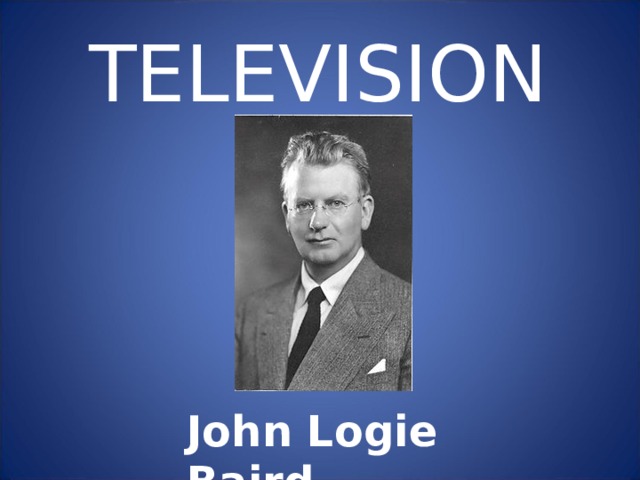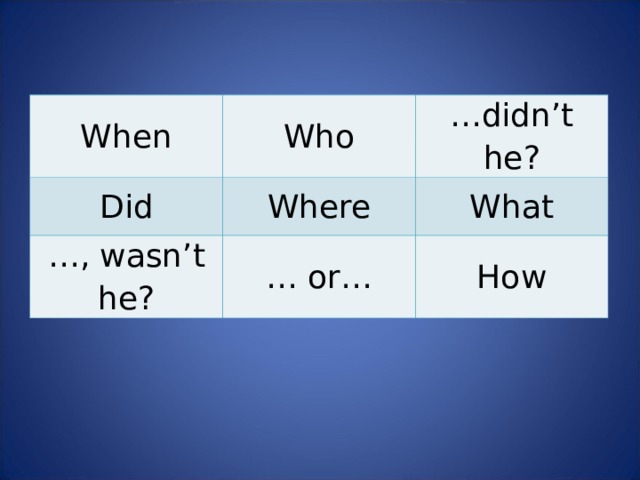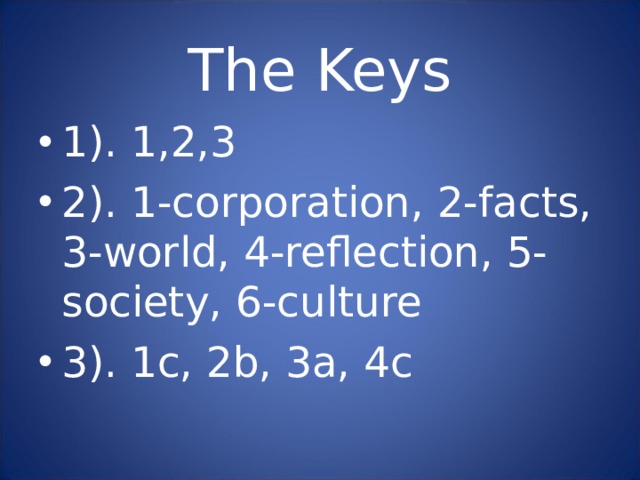
MODERN INVENTIONS IN OUR LIFE

The motto of the lesson
“ Necessity is the mother of the inventions”
“ Experience is the mother of wisdom”

Ten Great Inventors and their Inventions
Henry Ford (July 30, 1863 – April 7, 1947) was
the American founder of the Ford Motor Company
and father of modern assembly lines used in mass
production. His introduction of the Model T automobile
revolutionized transportation and American industry. He
was a prolific inventor and was awarded 161 U.S. patents.
As owner of the Ford Company he became one of the richest
and best-known people in the world. He is credited
with "Fordism", that is, the mass production of large
numbers of inexpensive automobiles using the assembly line,
coupled with high wages for his workers. Ford had a global
vision, with consumerism as the key to peace. Ford did not
Believe in accountants; he amassed one of the world's largest
fortunes without ever having his company audited under
his administration. Henry Ford's intense commitment
to lowering costs resulted in many technical and business
innovations, including a franchise system that put a dealership
in every city in North America, and in major cities on six
continents.

Ten Great Inventors and their Inventions
Valdemar Poulsen (November 23, 1869, in Copenhagen
– July 23, 1942) was a Danish engineer. He developed
a magnetic wire recorder in 1899. The magnetic recording
was demonstrated in principle as early as 1898 by
Valdemar Poulsen in his Telegraphone. Magnetic wire
recording, and its successor, magnetic tape recording,
involve the use of a magnetizable medium which moves
past a recording head. An electrical signal, which is
analogous to the sound that is to be recorded, is fed
to the recording head, inducing a pattern of magnetization
similar to the signal. A playback head (which may be
the same as the recording head) can then pick up
the changes in the magnetic field from the tape and
convert them into an electrical signal. Poulsen obtained
a Telegraphone Patent in 1898, and with his assistant,
Peder O. Pedersen, later developed other magnetic
recorders that recorded on steel wire, tape, or disks.

Ten Great Inventors and their Inventions
Alexander Graham Bell (3 March 1847 – 2 August 1922)
was an eminent scientist, inventor and innovator who is widely
credited with the invention of the telephone. His father,
grandfather and brother had all been associated with work
on elocution and speech, and both his mother and wife were deaf,
profoundly influencing Bell's life's work. His research on hearing
and speech further led him to experiment with hearing devices
that eventually culminated in Bell being awarded the first U.S.
patent for the invention of the telephone in 1876. In reflection,
Bell considered his most famous invention an intrusion on his real
work as a scientist and refused to have a telephone in his study.
Upon Bell's death, all telephones throughout the United States
"stilled their ringing for a silent minute in tribute to the man
whose yearning to communicate made them possible. Many other
inventions marked Bell's later life including groundbreaking work
in hydrofoils and aeronautics. In 1888, Alexander Graham Bell
became one of the founding members of the National Geographic
Society.

Ten Great Inventors and their Inventions
The Wright brothers , Orville (August 19, 1871 –
January 30, 1948) and Wilbur (April 16, 1867 –
May 30, 1912), were two Americans who are generally
credited with inventing and building the world's first
successful airplane and making the first controlled, powered
and sustained heavier-than-air human flight on 17 December
1903. In the two years afterward, the brothers developed
their flying machine into the first practical fixed-wing aircraft.
Although not the first to build and fly experimental aircraft,
the Wright brothers were the first to invent aircraft controls
that made fixed wing flight possible. The brothers' fundamental
breakthrough was their invention of "three axis-control", which
enabled the pilot to steer the aircraft effectively and to maintain
its equilibrium. This method became standard and remains standard
on fixed wing aircraft of all kinds. From the beginning of their
aeronautical work, the Wright brothers focused on unlocking the
secrets of control to conquer "the flying problem", rather than
developing more powerful engines as some other experimenters did.
Their careful wind tunnel tests produced better aeronautical data
than any before, enabling them to design and build wings and propellers
more effective than any before. Their U.S. patent 821,393 claims the
invention of a system of aerodynamic control that manipulates a flying
machine's surfaces.

Ten Great Inventors and their Inventions
John Logie Baird (August 13, 1888 – June 14, 1946)
was a Scottish engineer and inventor of the world's first
working television system. Although Baird's electromechanical
system was eventually displaced by purely electronic systems
(such as those of Vladimir Zworykin and Philo Farnsworth),
his early successes demonstrating working television
broadcasts and his colour and cinema television work earn
him a prominent place in television's invention. Baird was
born in Helensburgh, Argyll, Scotland. He was educated at
Larchfield Academy (now part of Lomond School),
Helensburgh; the Glasgow and West of Scotland Technical
College (which later became the University of Strathclyde);
and the University of Glasgow. His degree course was
interrupted by World War I and he never returned
to graduate.
![Ten Great Inventors and their Inventions Sergey Pavlovich Korolyov (often transliterated as Sergei Korolev , (January 12 [O.S. December 30 1906] 1907, Zhy tomyr – January 14, 1966, Moscow), was the head Soviet rocket engineer and designer during the Space Race between the United States and the Soviet Union in the 1950s and 1960s. He invented the R-7 rocket. Although trained as an aircraft designer, Korolyov's greatest strengths proved to be in design integration, organization and strategic planning. A victim of Stalin's 1938 Great Purge, he was imprisoned for almost six years, including some months in a Siberian gulag. Following his release, he became a rocket designer and a key figure in the development of the Soviet ICBM program. He was then appointed to lead the Soviet space program, given a rank of Academician (Member of Soviet Academy of Sciences), overseeing the early successes of the Sputnik and Vostok projects. By the time he died unexpectedly in 1966, his plans to compete with the United States to be the first nation to land a man on the Moon had begun to be implemented. Before his death he was often referred to only as](https://fsd.videouroki.net/html/2021/02/28/v_603bb4434fdc6/img7.jpg)
Ten Great Inventors and their Inventions
Sergey Pavlovich Korolyov (often transliterated as Sergei Korolev ,
(January 12 [O.S. December 30 1906] 1907, Zhy tomyr – January 14, 1966,
Moscow), was the head Soviet rocket engineer and designer during
the Space Race between the United States and the Soviet Union
in the 1950s and 1960s. He invented the R-7 rocket. Although trained
as an aircraft designer, Korolyov's greatest strengths proved to be in
design integration, organization and strategic planning. A victim
of Stalin's 1938 Great Purge, he was imprisoned for almost six
years, including some months in a Siberian gulag. Following his release,
he became a rocket designer and a key figure in the development of
the Soviet ICBM program. He was then appointed to lead the Soviet
space program, given a rank of Academician (Member of Soviet Academy
of Sciences), overseeing the early successes of the Sputnik and Vostok
projects. By the time he died unexpectedly in 1966, his plans to compete
with the United States to be the first nation to land a man on the Moon
had begun to be implemented. Before his death he was often referred
to only as "Chief Designer", because his name and his pivotal role in the
Soviet space program had been held to be a state secret by the
Politburo. Only many years later he was publicly acknowledged as the
lead man behind Soviet success in space.

Ten Great Inventors and their Inventions
Michael Faraday , FRS ( 22 September 1791 – 25 August 1867)
was an English chemist and physicist (or natural philosopher,
in the terminology of the time) who contributed to the fields
of electromagnetism and electrochemistry. Faraday studied
the magnetic field around a conductor carrying a DC electric
current, and established the basis for the magnetic field
concept in physics. He discovered electromagnetic induction,
diamagnetism, and laws of electrolysis. He established that
magnetism could affect rays of light and that there was an
underlying relationship between the two phenomena. His
inventions of electromagnetic rotary devices formed the
foundation of electric motor technology, and it was largely
due to his efforts that electricity became viable for use in
technology.

Ten Great Inventors and their Inventions
Thomas Alva Edison (February 11, 1847 – October 18, 1931)
was an American inventor and businessman who developed many
devices that greatly influenced life around the world, including
the phonograph and the long-lasting, practical electric light bulb.
Dubbed "The Wizard of Menlo Park" by a newspaper reporter, he was
one of the first inventors to apply the principles of mass production
and large teamwork to the process of invention, and therefore is often
credited with the creation of the first industrial research laboratory.
Edison is considered one of the most prolific inventors in history,
holding 1,093 U.S. patents in his name, as well as many patents
in the United Kingdom, France and Germany. He is credited with
numerous inventions that contributed to mass communication and,
in particular, telecommunications. His advanced work in these fields
was an outgrowth of his early career as a telegraph operator.
Edison originated the concept and implementation of electric-power
generation and distribution to homes, businesses, and factories –
a crucial development in the modern industrialized world. His first
power plant was on Manhattan Island, New York.
![Ten Great Inventors and their Inventions Sir Isaac Newton, FRS (4 January 1643 – 31 March 1727 [OS: 25 December 1642 – 20 March 1726]) was an English physicist, mathematician, astronomer, natural philosopher, alchemist, theologian and one of the most influential men in human history. His Philosophi e Naturalis Principia Mathematica, published in 1687, is considered to be the most influential book in the history of science. In this work, Newton described universal gravitation and the three laws of motion, laying the groundwork for classical mechanics, which dominated the scientific view of the physical universe for the next three centuries and is the basis for modern engineering. Newton showed that the motions of objects on Earth and of celestial bodies are governed by the same set of natural laws by demonstrating the consistency between Kepler's laws of planetary motion and his theory of gravitation, thus removing the last doubts about heliocentrism and advancing the scientific revolution.](https://fsd.videouroki.net/html/2021/02/28/v_603bb4434fdc6/img10.jpg)
Ten Great Inventors and their Inventions
Sir Isaac Newton, FRS (4 January 1643 – 31 March 1727
[OS: 25 December 1642 – 20 March 1726]) was an English physicist,
mathematician, astronomer, natural philosopher, alchemist, theologian
and one of the most influential men in human history. His Philosophi e
Naturalis Principia Mathematica, published in 1687, is considered to
be the most influential book in the history of science. In this work,
Newton described universal gravitation and the three laws of motion,
laying the groundwork for classical mechanics, which dominated the
scientific view of the physical universe for the next three centuries
and is the basis for modern engineering. Newton showed that the
motions of objects on Earth and of celestial bodies are governed by
the same set of natural laws by demonstrating the consistency between
Kepler's laws of planetary motion and his theory of gravitation, thus
removing the last doubts about heliocentrism and advancing
the scientific revolution.

Ten Great Inventors and their Inventions
Alfred Bernhard Nobel (Stockholm, 21 October 1833
- Sanremo, Italy, 10 December 1896) was a Swedish chemist,
- engineer, innovator, armaments manufacturer and the inventor
- of dynamite. He owned Bofors, a major armaments manufacturer,
- which he had redirected from its previous role as an iron and steel
- mill. In his last will, he used his enormous fortune to institute
- the Nobel Prizes. The synthetic element nobelium was named after
- him. Nobel found that when nitroglycerin was incorporated in
- an absorbent inert substance like kieselguhr (diatomaceous earth)
- it became safer and more convenient to handle, and this mixture
- he patented in 1867 as dynamite. Nobel demonstrated his explosive
- for the first time that year, at a quarry in Redhill, Surrey, England.
- Nobel later on combined nitroglycerin with another explosive,
- gun-cotton, and obtained a transparent, jelly-like substance,
- which was a more powerful explosive than dynamite. Gelignite,
- or blasting gelatin as it was branded, was patented in 1876, and
- was followed by a host of similar combinations, modified by the
- addition of potassium nitrate and various other substances.

The Keys
1. E 6. D
2. F 7. H
3. C 8. A
4. G 9. B
5. I 10. J

N I E L T I O S V E

TELEVISION
John Logie Baird

When
Who
Did
… didn’t he?
Where
… , wasn’t he?
What
… or…
How

Television in Our Life
The first commercial television broadcast was made on April 20, 1939 by Radio Corporation of America (RCA). Since 1939, it has become one of the most important facts of modern life. Television is very much a part of the modern world. Its effects are felt all over the world.
Television is a reflection of modern world, say some people. It shows contemporary society. It affects customs and culture, others way. Television is bad for culture because it keeps culture from growing, say still others.
Good or bad, television is difficult to avoid. Its pictures enter homes, stores, airports and factories. It is here to stay!
- The first commercial television broadcast was made on April 20, 1939 by Radio Corporation of America (RCA). Since 1939, it has become one of the most important facts of modern life. Television is very much a part of the modern world. Its effects are felt all over the world. Television is a reflection of modern world, say some people. It shows contemporary society. It affects customs and culture, others way. Television is bad for culture because it keeps culture from growing, say still others. Good or bad, television is difficult to avoid. Its pictures enter homes, stores, airports and factories. It is here to stay!

The Keys
- 1). 1,2,3
- 2). 1-corporation, 2-facts, 3-world, 4-reflection, 5-society, 6-culture
- 3). 1c, 2b, 3a, 4c

Advantages and Disadvantages of Television
- Television is one of the greatest achievements of the 20 th century. It is the most popular part of mass media. Television is the easiest and the cheapest source of information. It is an advantage.
- One of the positive features about TV is that it educates us. There are programs devoted to specialized subjects such as life of animals or plants, science, politics and many others. Watching such programs we learn a lot of useful and interesting information.
- TV gives us opportunity to travel around the world without getting up from the sofa. We can learn about life of people in different countries, their customs and traditions and we don’t pay for it.
- There are very exciting, funny and humorous programs, concerts full of wonderful music and songs especially on holidays. So, television entertains us and we like it because it makes us forget our everyday problems.
- One of the disadvantages is that television sometimes substitutes our nearest and dearest. It prevents us from communicating with our friends and relatives.
- Today you can see many films on TV which are filled with cruel and violent scenes that is very bad especially for children and teenagers.
- Watching TV too much may be dangerous for your eyesight. It is a disadvantage.

The
End

 Получите свидетельство
Получите свидетельство Вход
Вход












 Презентация "Modern inventions in our life" 9кл (377 KB)
Презентация "Modern inventions in our life" 9кл (377 KB)
 0
0 262
262 21
21 Нравится
0
Нравится
0


